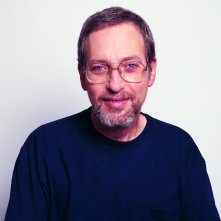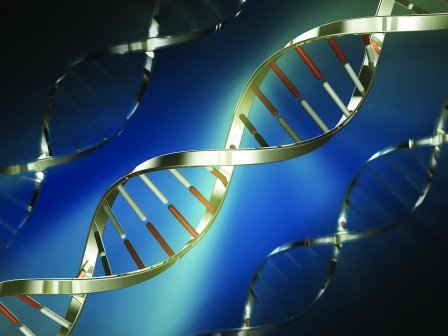The Human Genome Project is complete, and yet the end of that historic project marks only the beginning of a new era in genetic research, medical care, and technology: the era of individualized medicine.

Prof. Doron Lancet of the Department of Molecular Genetics at the Weizmann Institute of Science is one of Israel's most prominent genome researchers. The head of the Crown Human Genome Center, Prof. Lancet has directed research on DNA chips, disease genes, and genes responsible for smell and taste, and is currently working to develop a computational model for the origin of life on earth. Because the Weizmann Institute was Israel's liaison to the international Human Genome Project, Prof. Lancet and his colleagues have unusually intimate knowledge of the field of genomics and its implications.
What are some of these implications? Prof. Lancet sees the genome revolution as leading to a "new tomorrow." In the first part of this revolution, says Prof. Lancet, science concerned itself with discovering smaller and smaller bits of living organisms—from the body to cells to genes, and finally down to the level of DNA. "Now we are going in the opposite direction," he says. "We are trying to understand how DNA makes us."
Prof. Lancet compares the human genome to an encyclopedia: the volumes are the chromosomes, the pages are the genes, and the letters are the chemical components that make up the alphabet of the genomic code. Unlike a print encyclopedia, however, genetic material can reproduce itself. This reproduction happens when the two strands of the DNA molecule pull apart, acting as mirror-image templates for what will become two new, identical, double-stranded molecules of DNA. During this process of replication, errors (mutations) can be introduced into the sequence of chemical units (or nucleotide bases) that compose the two complementary DNA strands.
Scientists are trying to determine which of these errors might lead to particular diseases. Given that there are approximately three billion base pairs in the human genome, this would seem to be a daunting task. Luckily, scientists now have at their disposal some powerful tools and technologies, including what Prof. Lancet calls the "workhorses of genomics": polymerase chain reaction (PCR) machines, which amplify DNA, and automated fluorescence-based DNA sequencers, which read the chemical language of DNA automatically.
As the current medical paradigm of mass treatment of patients shifts towards individualized medicine tailored to each person, it will become increasingly important for doctors and researchers to be able to identify specific genetic patterns that lead to disease. Many disease mutations are already well known, particularly those responsible for the so-called single-gene diseases. These diseases, such as Fragile X syndrome, cystic fibrosis, Tay-Sachs disease, or Gaucher disease, result from a mutation in a single gene.

Far more common—and more complicated to comprehend and diagnose—are multiple-gene diseases, which include high blood pressure, heart disease, osteoporosis, Alzheimer's disease, schizophrenia, asthma, and cancer. These diseases, Prof. Lancet says, result from "combinations of small DNA changes, none of which can be honestly called a mutation." None of these changes causes harm by itself, but they do have the potential to cause harm in combination.
The small changes that lead to multiple-gene diseases are called single nucleotide polymorphisms, or SNPs (pronounced "snips"). SNPs can combine in many ways, leading to a bell-curve distribution of disease severity within a population. Using schizophrenia as an example, Prof. Lancet points out that one percent of all humans have the disease, which can cause delusions, hallucinations, and incoherence, but that there are "several types of schizophrenia, with no one characteristic to them all." Research at the Weizmann Institute has already identified a link between schizophrenia and SNPs within a gene known as AHI1, which could be a step toward new treatments for this devastating illness.
Just as there is variation in how genetic factors can contribute to disease, there is also variation in how a person's genetic profile can influence his or her reaction to a drug. Like multiple-gene diseases, drug reactions are also distributed along a bell curve in populations. The promise in teasing apart an individual's SNPs and genetic drug profile, says Prof. Lancet, lies in a new field called pharmacogenetics.
Pharmacogenetics would allow doctors to look at a person's genetic profile to decide what medication that person will receive, in what dose, and potentially even in combination with other drugs, in a personalized cocktail.
Whether it is the search for more SNPs contributing to disease, or the creation of portable databases of individual DNA profiles, the future of medicine is contained in each person's encyclopedia of genetic information—that's Prof. Lancet's vision for the "new tomorrow" and the dawn of individualized medicine. "Ten years from now, you might walk around with a card that says exactly what genome you have, and based on that, your medications and treatment will be prescribed," he says.
Prof. Doron Lancet's research is supported by the Nella and Leon Benoziyo Center for Neurological Diseases; the Crown Human Genome Center; and Ms. Martha Laub, Belgium.Prof. Lancet is the incumbent of the Ralph and Lois Silver Professorial Chair in Human Genomics.The Weizmann Institute of Science in Rehovot, Israel, is one of the world's foremost centers of scientific research and graduate study. The American Committee for the Weizmann Institute of Science is a community of dedicated people who share a common vision in support of the Institute. The generous assistance the Institute receives from individuals, foundations, and corporations is vital for its future. Committee members show their devotion to the advancement of the Institute's goals by becoming partners in the search for answers to the most difficult challenges facing humanity.
